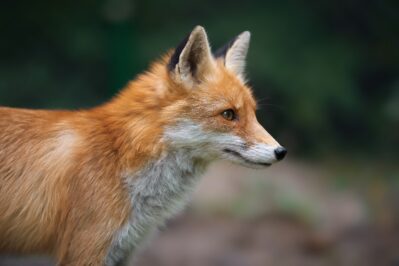Ready to learn about local ecology!
What's this?
River's Park Edge and its partners are pleased to offer all visitors a fun, educational challenge to locate ecological clues thoughout the park.
Learn more
Red fox
Vulpes vulpes
These orange- or red-haired, 8 to 15 pound, slender members of the dog family are most active at night. They tend to lay low during the day, often in areas with good visibility of the surroundings. Their white-tipped tails are believed to aid in communication.
Scroll to learn more
Prev NextWhat else can I find?
River's Park Edge is home to many points of interest. But if you found this information interesting, keep seeking out more clues.
Seek for more ecology clues
Red foxes tend to prefer grassland habitats.

As suburban sprawl encroaches on fox habitat, this adaptable species has become a familiar site in urban settings as well as woodlots, fencerows and draws.
Rabbits, rodents and birds are common prey for foxes. Insects and fruits can also make up a small portion of their diet when the opportunity arises.
Foxes utilize a wide variety of den sites, including repurposed, underground dens previously built by woodchucks and badgers, abandoned buildings, large drains and under porches. Dens tend to face west or southwest.
Female foxes, called vixens, birth four to six babies, called pups, cubs or kits, in March. After eight to 10 weeks, the pups are weaned to become more independent. Male foxes, called dogs, tods or reynards, and vixens work together to rear their young.
Learn what to do if you encounter a fox in your neighborhood from the Nebraska Wildlife Rehab.
